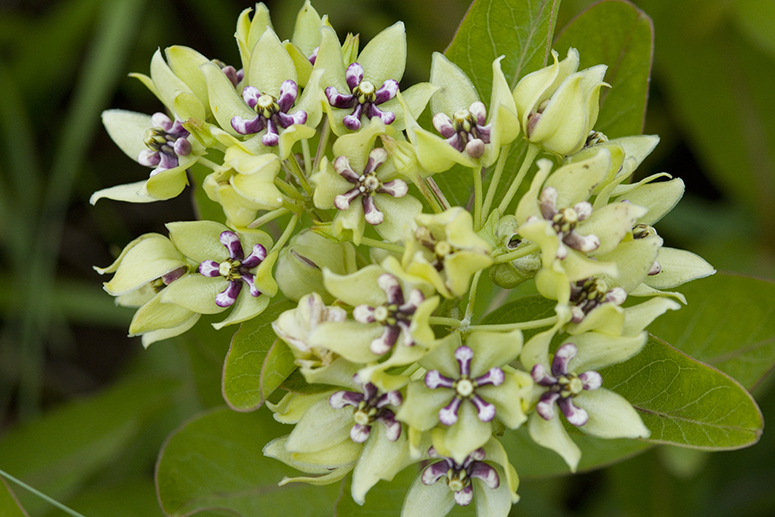
While searching for the much-celebrated and anticipated Monarch caterpillars, you might notice they aren’t the only ones enjoying your milkweed plants. Many other insects feed on Asclepias species, and some of them have lives nearly as fascinating as that of the beloved orange and black butterfly. Below are some noteworthy garden guests.

Large Milkweed Bug, Oncopeltus fasciatus
Large Milkweed Bugs feed on the seeds of milkweed plants, with a preference for Common Milkweed, but they will eat other species as well. Once a seed is found, the adult pierces it with a specialized mouthpart and injects saliva, liquefying the interior, which it can then suck back out. As is the case for the monarchs, these critters also use the milkweed’s toxins as protection against predators. This striking bug makes use of bright orange and black warning coloration to advertise its inedibility. Adults survive for weeks to a month, so they are present for only a short time and do relatively little damage from which plants easily recover. They may even be beneficial for controlling the spread of Honeyvine Milkweed, Cynanchum laeve, a vining species generally unwelcome in a garden setting.

Milkweed Tussock Moth Caterpillar, Euchaetes egle
These fuzzy little guys are occasionally mistaken for Monarch caterpillars, especially when very small. One tip to help with ID is that Monarch eggs are laid singly, one per shoot or plant, while Tussock Moths are gregarious caterpillars, living (and eating!) together in large numbers while young. Older caterpillars develop distinctive tufts of black, white and orange and are more solitary. Adults have dull grayish brown wings, with an orange and black body and advertise their toxicity with a series of clicks. These caterpillars’ voracious appetites are a common concern for Monarch gardeners, but again, they are present for a short time and the plants will rebound quickly. Some research suggests they prefer older and tougher milkweed leaves, contrasted with the Monarch’s preference for younger, more tender parts of the plant.

Aphids, family Aphididae
The quintessential garden pest including both native and introduced species, aphids feed on the young shoots of milkweed plants intended for our Monarch lovelies. Whoever coined the phrase “reproduce like rabbits” clearly knew nothing of aphids. They are parthenogenetic, meaning that females produce clones of themselves, and in some species those clones also already contain clones of their own. It is no wonder large colonies seem to appear out of nowhere overnight! Aphid predators include tiny parasitic wasps, ladybugs, aphid midges, lacewings, and small spiders. The best way to attract these beneficial aphid predators is by supplying a buffet of aphids. Many gardeners therefore choose to tolerate aphid infestations and allow nature to find its balance. If there is concern for a particular plant you can spray them off with a strong blast of water to affected leaves. Decreasing watering for a short time may also help by slowing the production of young leaves, an aphid’s favorite meal.

Unexpected Cycnia Moth Caterpillar, Cycnia inopinatus
Another milkweed-dependent caterpillar, the Unexpected Cycnia Moth has not just a fantastic name but a striking appearance as well. Aptly nicknamed the “orange chenille caterpillar” by one enthusiast, they are considered rare, with localized populations that are generally associated with quality remnant prairies. Just like our iconic Monarchs, they have been adversely affected by the loss of habitat. Usually found on Asclepias tuberosa, there is much to be studied about this species, and an opportunity for citizen science if you find one in your garden. The species overwinters in cocoons in leaf litter, a consideration for land managers conducting prescribed burns. Adults are a delicate silvery white with orange on the leading edges of the forewings.
Spotting these colorful creatures in the wild or in a butterfly garden is a great reminder that milkweed isn’t just for Monarchs, and that choosing native species supports a wide diversity of life.
Text by Sarah Beier. Photos in order by Linda Williams, Tom Schroeder, Sarah Beier, Tom Schroeder







